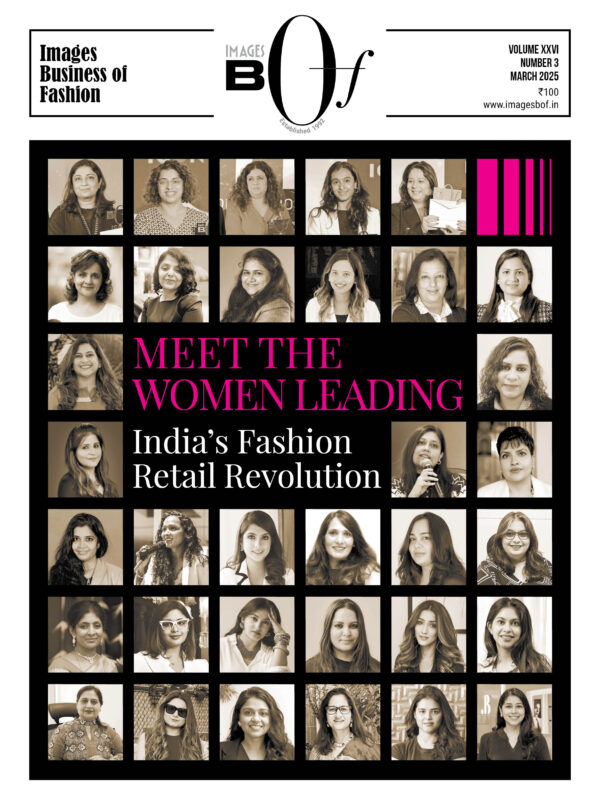As India’s consumer landscape experiences a seismic shift, new-age brands are rising as powerful forces in fashion retail—blending digital-first strategies, community-led marketing, and agile retail experiments. These brands are no longer fringe players—they’re shaping the future.
At the India Fashion Forum 2025, a session moderated by Dhiraj Agarwal, CEO & Co-founder of Campus Sutra, brought together founders and leaders from some of India’s most exciting emerging fashion labels.
“As far as consumer brand stories in India go, the last decade has been just that—revolutionary. And this change has been driven by new-age brands. They’re not just participating; they’re changing the game,” said Agarwal, opening the session.
On the panel of experts were:
- Aditya Khanna, Co-founder, Assembly
- Alok Paul, COO & Co-founder, Berrylush
- Anuj Nevatia, Founder, Bacca Bucci
- Kush Bhatia, Director, Amukti & Burnt Umber Fashion
- Paul George, Executive Director, Vismay
- Abhijeet Singh, Founder & CEO, Appbrew
“The fashion market today is like the marriage market of India in the 1990s and early 2000s—the era of Shaadi.com, when brands aimed to build lifelong relationships with consumers,” said Agarwal. “Now, it’s the era of Tinder. Consumers are looking for flings, not marriages.” He explained that today’s fashion landscape is filled with a variety of brands, each catering to different needs, moods, and moments in a consumer’s life.
He then invited the panelists to share their experiences of building new-age brands and asked them to reflect on two or three things they’ve done differently from established players.
Driving Growth Through Experimentation
Aditya Khanna, Co-founder of Assembly, shared that while the brand has been predominantly digital-first, venturing offline has become increasingly important.
“There’s still a large chunk of consumers who prefer to shop offline, so tapping into that space has been essential for our growth,” he said.
One of the biggest differentiators for Assembly, according to Khanna, is the ability to experiment freely—something that’s often harder for legacy players.
He gave examples of this stating, “We noticed a lot of luggage is bought around weddings, so we’ve partnered with a groomswear store to offer Assembly luggage as part of their portfolio. Similarly, since a large segment of our audience comprises working professionals, we’ve tied up with a co-working space to retail our products there too.”
Another area where young brands like Assembly have an edge is in their use of data. According to Khanna, digital-first brands are able to build rich customer data that helps them make precise decisions.
Blending Community Culture with Offline Retail Innovation
Anuj Nevatia, Founder of Bacca Bucci shared: “When we started out, the premium sneaker market in India was largely dominated by international giants like Nike, Jordans, and New Balance. Indian legacy brands were mainly focused on mass markets, leaving a clear gap for something aspirational yet affordable. That’s the space Bacca Bucci stepped into, and we’ve served close to 40 million consumers so far.”
Looking ahead, Nevatia shared that they plan to launch their exclusive brand outlets.
“But for us, it’s not just about selling products—it’s about creating an experience. In 2025 and the coming years, consumers want authenticity. Real brands, real people, and real content. And that means clear communication and community-building,” he emphasised.
To bring that vision to life, Bacca Bucci is building what they call the Bacca Bucci Culture Crew (BBCC)—a community-driven initiative to spotlight underrated artists and creators across India.
Building a Brand with Hyperlocal Design Sensibilities
Dhiraj then turned the discussion to Paul George, Executive Director of Vismay, who is doing business in a highly saturated and traditional segment—women’s ethnicwear. He asked Paul what led him to start in this category and how he plans to differentiate from the well-established players.
Being from Kochi, Kerala, George saw a clear market gap. While most prominent ethnicwear brands reflected a North Indian aesthetic, there were hardly any brands rooted in South Indian tastes, which are more elegant, minimal, and avoid heavy embellishments. This insight became the foundation for Vismay.
George used the downtime during the pandemic to plan the brand’s positioning, store design, and product range. Post-COVID, they tested their concept with a store in Kerala. Seeing encouraging results, they expanded to cities across South India—Hyderabad, Chennai, Mysore, Mangalore, and Coimbatore.
One of the brand’s core differentiators is its departure from traditional seasonal drops. Instead of launching summer or winter collections, Vismay follows a weekly design cycle, keeping the product range consistently fresh.
Navigating Online-First Challenges
Dhiraj then turned to Alok Agarwal, Co-founder of Berrylush, asking him about some disadvantages of being an online-first brand.
“One of the biggest disadvantages of being online-first is pricing. Most online platforms use dynamic pricing—where the price changes based on stock levels, promotions, and algorithms. This often leads to inconsistencies, and over time, it can dilute the brand value. This fluctuation creates a perception mismatch and can make it hard to maintain authenticity,” said Agarwal.
He emphasised that authenticity in pricing is key to building long-term brand trust, something that can get compromised in a deeply discount-driven digital environment.
Agarwal said, the most important thing a new founder must do is to understand their unit economics really well from the start. Advertising costs—especially on platforms like Meta—have risen drastically and will only continue to go up. Not just because of competition from new brands, but also because legacy brands are now pouring money into digital too.
“Start with healthy gross margins—at least 60–65%. If you begin with low margins, it’s extremely difficult to scale profitably later. Also, the sweet spot for pricing, at least in our category, is between ₹1,200–₹1,800. Below that, it gets really difficult to compete sustainably,” he advised.
Leveraging General Trade
Dhiraj then moved to Kush Bhatia, Director, Amukti & Burnt Umber Fashion who has tapped into both general trade and exclusive brand outlets, “How has managing both channels shaped your growth, and what have you learned along the way?” he asked Bhatia.
Bhatia shared, “One of the biggest advantages of starting with general trade is the hyperlocal consumer insight it offers. You get to know what people in a specific neighbourhood actually want — and that helped us define our strategy when we launched our own stores.”
He explains that while GT served as a great testing ground, it came with limitations — especially in terms of product experimentation and the depth of assortment.
“GT gives you reach, but EBOs give you room to play. Once you launch your own stores, it even helps your GT presence. It’s a loop — each channel feeding the other, and constantly teaching you more,” Bhatia said.
Apps Solve for Trust, Personalisation
Introducing Abhijeet Singh, Founder & CEO, Appbrew, Dhiraj kicks off with a question that many fashion brands continue to ponder: When is the right time to invest in an app?
Singh explained that back in 2015–16, app-first strategies failed due to macro limitations—RAM space was limited, 3G/4G hadn’t matured, and consumer behavior wasn’t aligned. In contrast, today’s landscape has changed dramatically, where Gen Z has grown up on apps.
“When brands have both a website and an app, customers feel there’s more legitimacy. It’s a trust signal — especially for young brands,” Singh explained.
He outlined three major benefits of having an app:
- Trust & Retention: Apps boost credibility and customer loyalty.
- Platform Independence: “It’s a hedge against Meta, Amazon, Google,” he said, referencing the rising CAC on these platforms.
- First-party Data: “Brands get up to 50% of customer data from apps — what products are browsed, CTRs — and this helps with inventory forecasting and geo-level assortment planning,” he added.
So when is the right time to build an app? “Typically, when a brand is doing 70–100 orders per day and has figured out its PMF, meta ads, supply chain and CX,” he said.
Balancing Pricing Across Channels
When it comes to pricing across formats like general trade, exclusive brand outlets (EBOs), and online platforms, Assembly has taken a firm stand on consistency. Khanna from Assembly shared that although each channel has its own pricing pressure, the brand chooses to keep prices mostly uniform, allowing only a small variation of about 5–7%.
Instead of creating different product lines for digital and physical retail, Assembly believes in product uniformity. The brand sees online as a way to create awareness and offline as the channel to fulfil that demand. While consumer behaviour differs—combos and sets perform better online, for instance—Assembly tackles this with small incentives and rebates for offline partners to balance things out.
Lessons in Offline Expansion
Alok Paul of Berrylush shared insights from running stores across multiple cities and highlighted the importance of choosing the right locations. He cautioned against assuming future developments will drive footfall. According to him, it’s smarter to invest upfront in high-footfall areas rather than wait for growth.
He emphasised that managing a scattered retail network brings operational hurdles—from team supervision to visual merchandising—making it harder to scale smoothly.
Building a D2C Brand Through Social Media
Bacca Bucci’s co-founder Anuj Nevatia discussed how the brand evolved from being heavily marketplace-reliant to building a strong direct-to-consumer (D2C) identity.
The shift began in 2019 with the rise of platforms like Shopify. Anuj and his team built their own website during the COVID lockdowns, which now accounts for nearly 42% of their revenue.
Social media played a huge role in this transformation. The brand focused on user-generated content, influencer collaborations, and a vibrant, Gen Z-friendly tone to connect directly with its audience.



